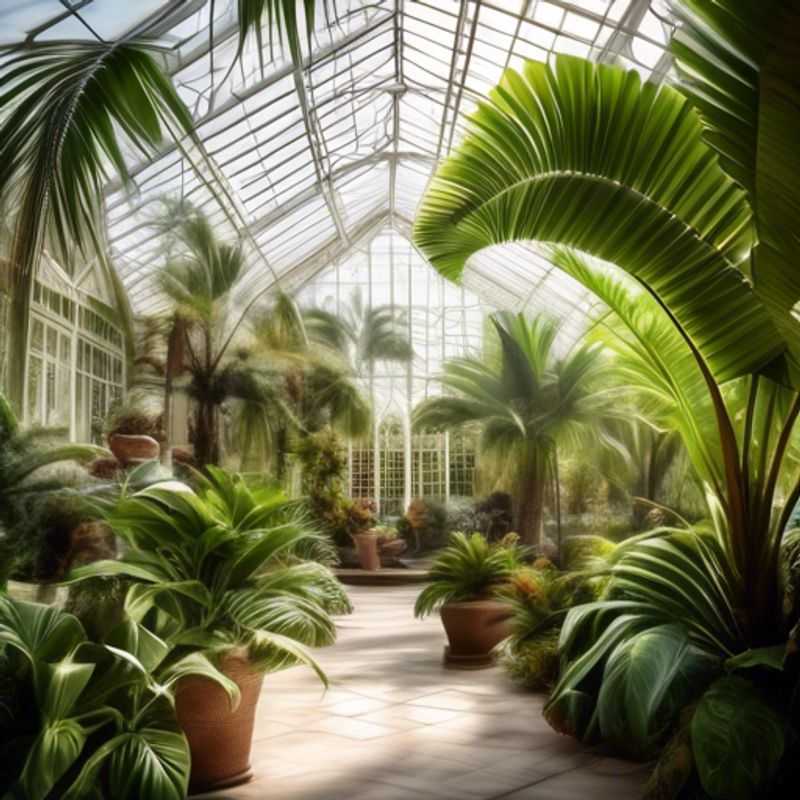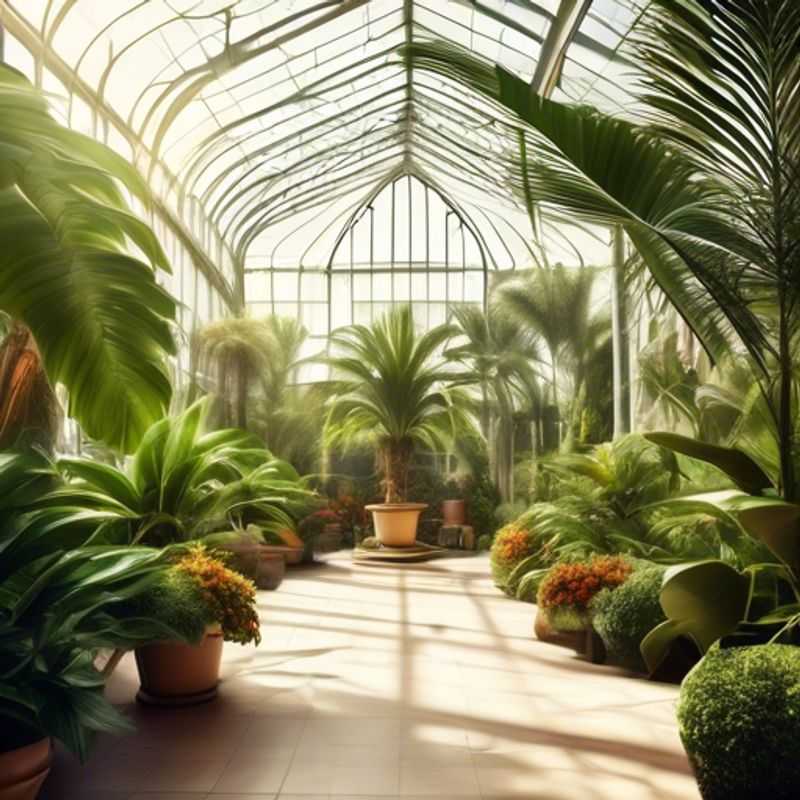Top Things to Know Before Buying Palm House Plants

Top Things to Know Before Buying Palm House Plants: A Guide for the Curious Green Thumb
Bringing a touch of the tropics into your home with a palm plant is a fantastic idea, but before you bring one home, there are a few things you need to know. Let’s dive into the fascinating world of palm care!

Unlocking the Secrets of Palm Plant Care: Light & Watering Essentials
Palm trees are known for their tropical flair, adding a touch of the exotic to any indoor space. But understanding their light and watering needs is key to keeping them thriving. Most palm varieties prefer bright, indirect light, mimicking their natural habitat under the canopy of a rainforest. Direct sunlight, especially during the hottest hours, can scorch their leaves. Avoid placing them near windows with strong afternoon sun.
When it comes to watering, palms prefer a consistent moisture level, but hate soggy roots. Allow the top inch or two of soil to dry out before watering thoroughly. Avoid overwatering, as this can lead to root rot. In winter, when growth slows down, you can reduce watering frequency. Pay attention to the type of palm; some, like the Areca palm, prefer slightly drier conditions than others.
To ensure optimal health, consider a monthly fertilization during the growing season (spring and summer). Use a balanced liquid fertilizer diluted to half strength. Observe your palm for signs of stress, like yellowing leaves, which could indicate a nutrient deficiency or watering issues. Regularly inspecting your palm and adjusting your care routine accordingly will ensure your tropical beauty flourishes in your home.

Unlocking the Secrets of Palm Plant Happiness: Finding the Perfect Temperature and Humidity
Palm trees are tropical plants, which means they thrive in warm, humid environments. The ideal temperature range for most palm species is between 65°F and 85°F (18°C and 29°C). However, some species can tolerate slightly cooler or warmer temperatures.
Humidity is also crucial for palm trees. They prefer humidity levels of at least 50%, and some species may even need humidity levels as high as 70%. You can increase the humidity around your palm tree by misting it regularly, placing it on a humidity tray, or using a humidifier.
To ensure your palm thrives, pay attention to the specific needs of your particular species. Some varieties, like the Majesty palm, are more tolerant of lower humidity. It's always a good idea to research your specific type of palm to ensure you're providing the ideal environment for its growth and health.

Planning for Paradise: Matching Palm Size to Your Space
Choosing the right palm tree for your space is crucial, as they can grow quite large. Consider the mature size of the palm plant and the available space in your garden or yard. Measure the area where you plan to plant the palm and research the mature height and spread of the palm species you are interested in.
Palm trees are generally slow-growing but can reach impressive heights and widths. Be realistic about the long-term growth of your palm tree and ensure it will have adequate space to thrive. You may need to consider pruning or relocation if your chosen palm tree becomes too large for its current spot. Some palm tree varieties, like the Canary Island Date Palm, can grow to be very large, while dwarf varieties remain smaller.
Think about the future and how the palm tree's size will impact your garden. Will it block sunlight to other plants? Will it obstruct views? These are all factors to consider when choosing a palm tree for your property.

Palm Houseplant Pests and Diseases: A Guide to Keeping Your Tropics Thriving
Palm houseplants are a popular choice for their tropical vibes and air-purifying abilities. However, they can be susceptible to a variety of pests and diseases that can threaten their health and vitality. Early identification and treatment are crucial to prevent further damage and ensure the plant's survival.
Common Pests:
Scale: These tiny, armored insects suck sap from the plant, causing yellowing leaves and stunted growth. They can be treated with insecticidal soap or horticultural oil.
Mealybugs: These soft-bodied insects, resembling cottony masses, feed on plant sap, causing similar symptoms to scale. They can be treated with a cotton swab dipped in rubbing alcohol or a systemic insecticide.
Spider mites: These microscopic pests spin webs on the underside of leaves and feed on plant sap, causing yellowing and browning. They can be controlled with insecticidal soap or a miticide.
Common Diseases:
Fungal Leaf Spot: This disease manifests as brown or black spots on leaves, often with a yellow halo. It is caused by excessive humidity and poor air circulation. Treatment involves removing infected leaves and applying a fungicide.
Root Rot: This is a serious disease caused by overwatering, leading to root decay and wilting. Prevent root rot by using well-draining potting mix and allowing the soil to dry slightly between waterings. If you suspect root rot, repot the plant with fresh soil and prune any damaged roots.
Bacterial Blight: This disease causes brown, mushy spots on leaves and stems. It thrives in warm, humid conditions and can be spread by infected tools. Treatment involves removing infected plant parts and improving air circulation.
Prevention is key. Maintaining proper care, such as providing adequate light, water, and humidity, can help prevent pests and diseases. Regularly inspecting your palm for signs of infestation or disease will allow for early intervention and minimize damage.

Palm Paradise: Mastering the Art of Potting and Soil Selection
Selecting the right potting mix and container is crucial for the well-being of your palm plant. Opting for a well-draining, slightly acidic potting mix is paramount. A mix of peat moss, perlite, and vermiculite provides an excellent balance.
Ensure your container has sufficient drainage holes to prevent waterlogging, which can lead to root rot. Avoid using clay pots as they can dry out quickly, particularly in hot climates. Plastic containers or terracotta pots with a glaze can be suitable alternatives.
Repotting your palm plant every few years, or as needed, into a slightly larger container with fresh potting mix is essential for its growth. This process allows for optimal root development and nutrient availability.

The Importance of Regular Pruning and Maintenance: A Guide to Healthy Growth
Regular pruning and maintenance are crucial for maintaining the health, vigor, and aesthetic appeal of your trees and shrubs. It's not just about removing dead or diseased branches; proper pruning encourages growth, promotes fruit production, and enhances the plant's overall structure.
Pruning stimulates growth. When you prune, you remove competing branches and redirect energy to the remaining branches, leading to stronger, healthier growth. It can also encourage flowering and fruit production.
Regular maintenance also helps prevent disease and pest problems. Removing dead or diseased wood eliminates potential breeding grounds for insects and fungal infections. Proper pruning can also improve air circulation, which helps prevent diseases.
Pruning can also enhance safety. By removing weak or structurally unsound branches, you can prevent them from falling and causing damage or injury.
Here are some important tips for successful pruning:
• Prune during the dormant season, typically in late winter or early spring, before new growth begins. This helps minimize stress to the plant.
• Use sharp, clean pruning tools to make clean cuts and minimize damage to the plant.
• Prune branches back to a lateral bud or branch, which encourages growth in that direction.
• For most trees, avoid removing more than 25% of the canopy in a single pruning session.
Remember, a little bit of care goes a long way in keeping your trees and shrubs healthy and beautiful.

Bringing the Tropics Home: A Guide to Indoor Palm Varieties
When it comes to bringing a touch of the tropics indoors, palm plants are a natural choice. Their graceful, feathery foliage adds a sense of tranquility and elegance to any space. But with so many varieties to choose from, how do you know which ones will thrive in your home? Fear not, fellow plant enthusiast! I'm here to guide you through the world of indoor palm varieties, ensuring your green companions flourish in their new abode.
Parlor Palm, also known as Chamaedorea elegans, is a popular choice for beginners. They're relatively low-maintenance, preferring bright, indirect light and well-draining soil. These charming palms thrive in average room temperatures and are known for their air-purifying properties, adding a touch of green to your living space.
For a larger, more dramatic statement, consider the Areca Palm, also known as the Butterfly Palm. With its cluster of slender stems and lush, feathery fronds, it's a real showstopper. These palms prefer bright, indirect light and consistently moist soil, so be sure to water them regularly.
The Kentia Palm (Howea forsteriana), a native of Lord Howe Island, is known for its stately elegance and resilience. They can tolerate lower light conditions and are relatively drought-tolerant, making them a great choice for busy households. Keep them away from direct sunlight and provide them with well-draining soil.
If you're looking for something a bit more unique, consider the Lady Palm (Rhapis excelsa). Their fan-shaped leaves and compact growth habit make them ideal for smaller spaces. They prefer bright, indirect light and well-draining soil, and their low-maintenance nature makes them a favorite among plant enthusiasts.
Remember, every palm plant has its own unique needs. Do your research and choose a variety that fits your lifestyle and home environment. With proper care, your indoor palm will bring a touch of tropical paradise to your space for years to come!
